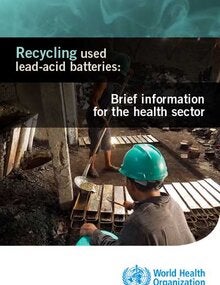Overview
The manufacture of lead-acid batteries accounts for about 85% of the global demand for refined lead metal. Much of this demand is met by recycled lead and a key source is, in fact, the recycling of lead-acid batteries. Lead recycling is an important cause of environmental contamination and human exposure. This is a concern because of the significant and long-lasting impacts of lead exposure on human health.
Lead is a cumulative toxicant that affects multiple body systems including the neurological, hematological, gastrointestinal, cardiovascular, reproductive and renal systems. Infants and young children are particularly vulnerable to lead exposure and toxicity. Frequent hand-to-mouth activity means that young children ingest lead in dust. Moreover, they absorb proportionately more lead from the gastrointestinal tract than do adults. The brain and nervous system are still developing during early childhood and can be damaged by lead exposure, which can result in impaired neurocognitive development, reduced intelligence quotient (IQ) and increased risk of behavioural problems. Chronic lead exposure is associated with an increased risk of hypertension and renal disease. Severe lead poisoning, whether from acute or chronic exposure, can be fatal.
It is estimated that, in 2015, lead exposure accounted for 495 550 deaths and the loss of 9.3 million disability-adjusted life years (DALYs) due to long-term impacts on health, the highest burden of disease being in low- and middle-income countries. The economic costs of impaired neurocognitive development alone were estimated to amount to 1.2% of global gross domestic product in 2011.
Also available in French
|

